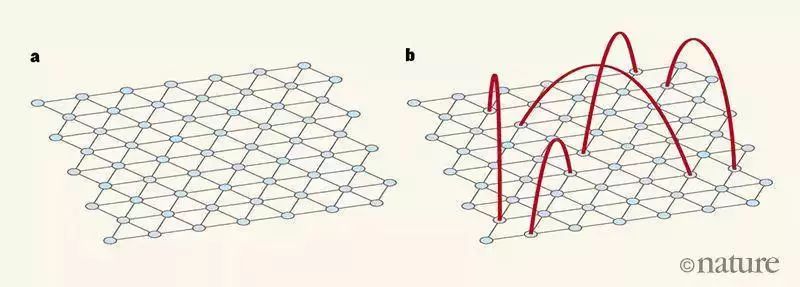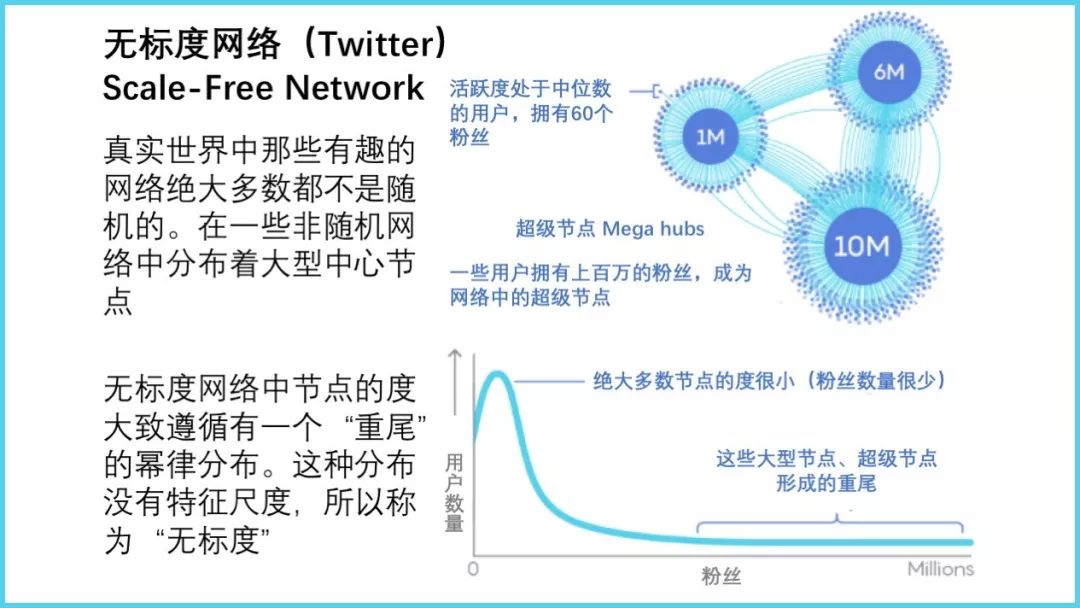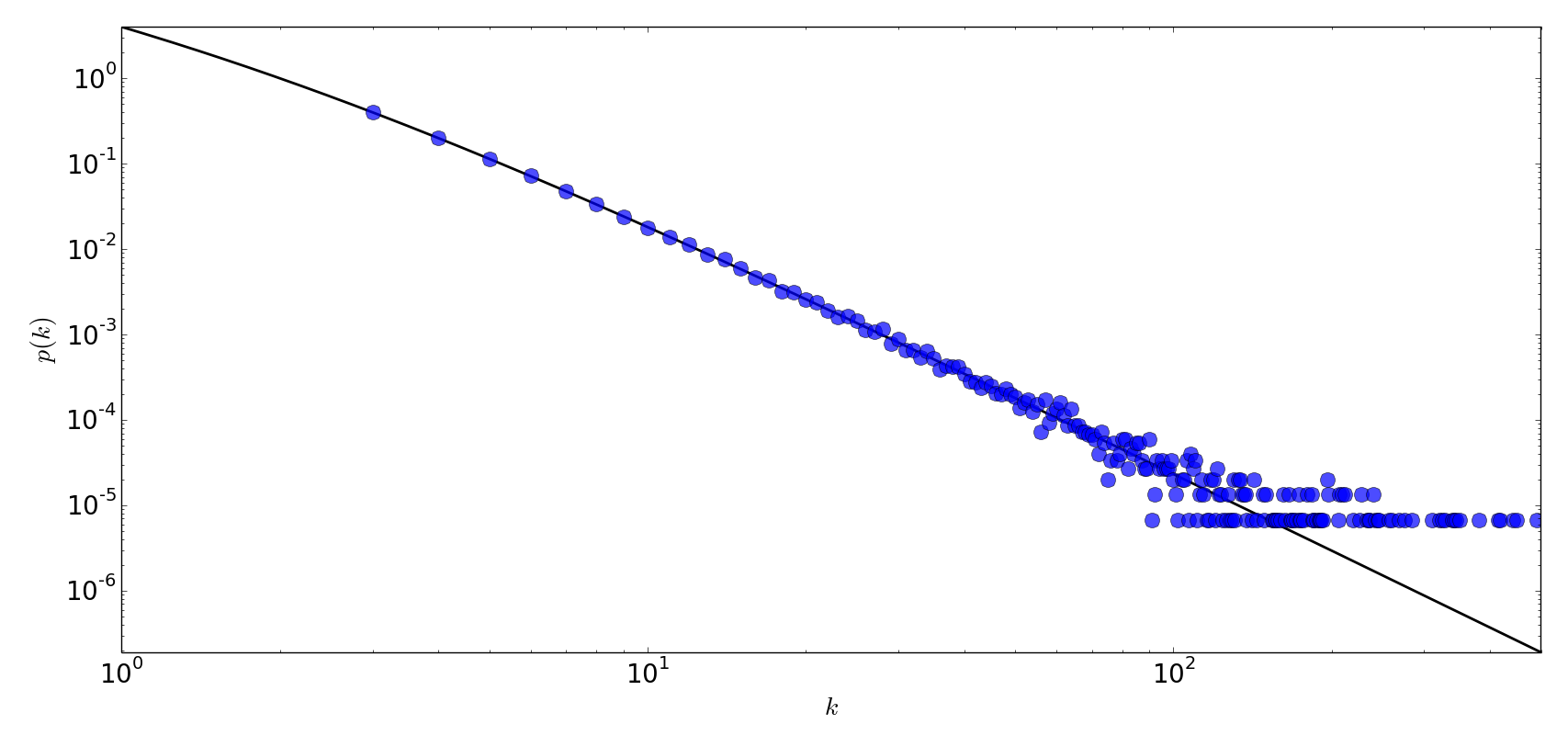知识库
Erdos-Renyi model
- 生成随机网络
- 网络中任意两个节点之间的平均路径长度(两个节点相连所需要的最小连边数量),与节点总数满足对数关系
- 缺点:
- failed to replicate the clustering, triadic closure, and hubs seen in real-world networks.
- 对网络中节点之间连边生成规则缺乏认识,并且还假设一对节点之间连接的概率可以随机给定
- 不能捕捉到真实世界中网络节点的局部聚集性(Cliquishness)
- 聚集性由聚集系数来度量,聚集系数定义为“某个节点的邻居节点之间的连边数量,与邻居节点之间可能连边数最大值之比”,用来定量描述节点的聚集程度
泊松分布
- 泊松分布适合于描述单位时间(或空间)内随机事件发生的次数。
- 如某一服务设施在一定时间内到达的人数,电话交换机接到呼叫的次数,汽车站台的候客人数,机器出现的故障数,自然灾害发生的次数,一块产品上的缺陷数,显微镜下单位分区内的细菌分布数等等。
Watts-Strogatz model
- 引入随机性(Stochasticity)
- generate random-graphs with small-world properties
- Small-world networks tend to contain cliques, and near-cliques, meaning sub-networks which have connections between almost any two nodes within them
- 真实世界的网络中,节点聚集的典型例子是“我朋友的朋友也是我的朋友”:三个人在社交网络中彼此成为朋友的概率,远远高于用简单随机过程构建的模型网络所做的预测。

1988年,Watts 和 Strogatz 提出了一个用于解释实际网络结构的模型。a,图中的三角晶格中,每个节点和其他六个节点相连,Watts就是从这种规则的网络开始构建模型;b,他们让节点之间以固定的概率随机重连。随着这个概率值的增加,越来越多的近路(红线)把网络中相距较远的节点连接起来。这就能产生小世界效应:只需通过少许几条节点之间连边,任何两个节点都能相连,但是相邻的节点又相互连接,形成了集聚集团。

随机性可以解释被统称为“六度分隔”的小世界现象
Barabasi-Albert model
- generate scale-free networks through preferential attachment mechanism(偏好依附机制)
- 该模型强调了真实网络中节点之间连边的概率经常有“重尾分布(heavy-tailed)”的特点,而不是由随机网络推出的泊松分布

scale free behaviour
A scale-free network is a network whose degree distribution follows a power law, at least asymptotically(近似的). That is, the fraction P(k) of nodes in the network having k connections to other nodes goes for large values of k as

幂律分布(the Power Law distribution)
In statistics, a power law is a functional relationship) between two quantities, where a relative change in one quantity results in a proportional relative change in the other quantity, independent of the initial size of those quantities: one quantity varies as a power of another. 
Why power has two meanings on the internet
A very small number of websites have colossal numbers of links, while millions of others have to make do with only a few.
争议
Zipf’s law and the Internet
3 assumptions:
- Proportional growth or preferential attachment
- The sites established early would have grown to greater sizes than recently founded ones.
- However, studies have found only weak correlation between the size of a site and its age
- Sites can grow at different rates, depending on the type of content and interest that they generate.
In summary, a very simple assumption of stochastic multiplicative growth, combined with the fact that sites appear at different times and/or grow at different rates, leads to an explanation for the scale free behavior so prevalent on the Web
- connnection to the of Barabasi-Albert network——偏好依附机制
It can b expressed in mathematical fashion as a power law, meaning that the probability of attaining a certain size x is proportional to x^r, where r is greater than or equal to 1.

